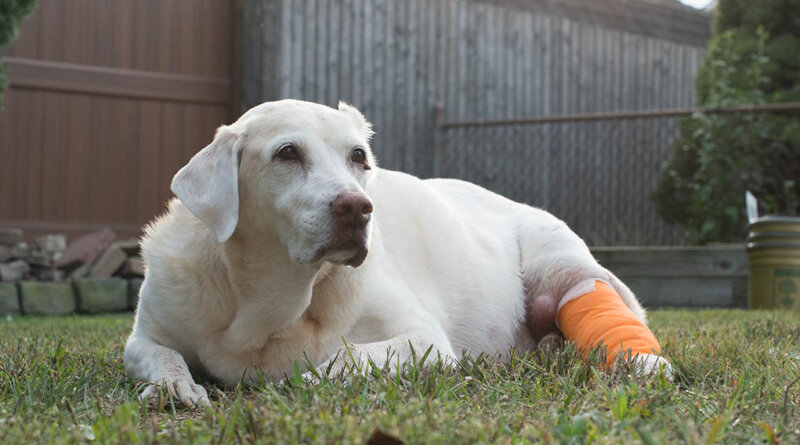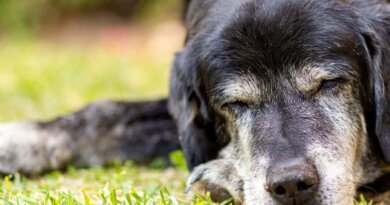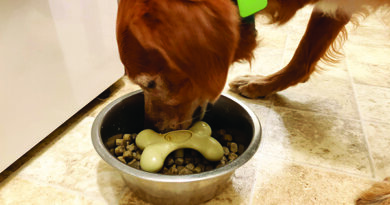Mastocytoma In Dogs – Top Dog Tips
Have you ever felt a strange lump on the surface of your dog’s body? If so, then it’s best to contact your vet quickly for further examinations. This can be a sign of mastocytoma in dogs.
Mast cells are also known as mastocytes or labrocyte. Mast cells are part of the white blood cells or the myeloid lineage.
They work in suppressing foreign antigens in the body as an immunity response.
Mast cells are found all over the body. It is found in the connective tissues from under the skin, blood vessels, lymph vessels, lungs, and intestines.
These include histamine and heparin in their composition which helps in reacting to allergens, infections, or asthma.
Mastocytoma in Dogs
Mastocytoma is also known as mast cell tumors or mast cell sarcomas. Mast cell tumors occur when there is a collection of mast cells in an area.
The mast cells divide rapidly and grow into a tumor. Some mast cell tumors may grow gradually and others often grow rapidly.
Often, mastocytomas in dogs are benign but they can be malignant. Mast cell tumors release significant amounts of histamines, heparin, serotonin, and cytokinesis. These can affect the function of the surrounding cells.
Without proper regulation and maintenance, the function will be heavily affected. It can result in allergic reactions, internal hemorrhage, gastric ulcers, and many more.
Mastappearumors usually appear on the external parts of the body but they can also appear in the bone marrow, intestines, liver, intestines, and spleen. In this stage, Mastocytoma will be cancerous.
Dogs who have been diagnosed with mast cell tumors may experience regrowth of the mast cell tumors even after removal.
Diagnosing and preparing treatment for Mastocytoma may depend on the grade. Lower grades and stages are less aggressive and may grow slower or more gradual.
On the other hand, mast cell tumors in higher stages or grades may have rapid growth and spread.
Grades of Mastocytoma in dogs
- Grade 1 – It is still on the surface of the skin. It is benign and has not metastasized.
- Grade 2 – When the tumor has penetrated the skin and the tissue. It may have or not gone through metastasis.
- Grade 3 – The tumor may have spread and has gone through rapid growth and has penetrated below the skin and tissue. It has a high chance it has already metastasized.
Stages of Mast cell tumors
- First, stage 1 is a single tumor without metastasis.
- Secondly, stage 2 is a single tumor with metastasis into the surrounding lymph nodes that caused secondary growth
- Thirdly, in stage 3 is multiple tumors or growth of the tumor that has annexed subcutaneously with or without lymph node involvement
- Lastly, stage 4 are multiple tumors or large tumors with metastasis to the skin or widen presence of mast cells present in the blood and lymph node involvement
The prognosis of Mastocytomas in dogs will differ and vary depending on the grade and stage.
There is an excellent to good prognosis with dogs diagnosed with Stage 1-2 and Grade 1-2 Mastocytoma. This stage can be treated efficiently if addressed immediately.
Unfortunately, mast cell tumors that are in stages 3-4 and Grade 3 may have a fair to very poor prognosis.
Although treatment may lessen the symptoms and prolong their life, those who are in the higher stages and grades may require extensive support from therapy to medication.
Mastocytomas that are in the higher stages may be hard to rehabilitate, especially those whose organs have been affected. Side effects of mast cell tumors can worsen over time making it difficult to relieve one disease from another.
Owners should have their pets checked immediately and regularly if they suspect any lump or irregular skin conditions or changes in behavior as it may be a symptom.
Symptoms of Mastocytoma in Dogs
Some dogs may experience the symptoms of mast cell tumors quite late than others.
Often physical symptoms appear first and the latter follows. Owners should have their dog checked immediately if they suspect their dog to have some symptoms.
Mast cells are found almost everywhere in the body. That’s why mast cell tumors are often mistaken to be lumps, warts, or wounds.
Their appearance and location may differ oftentimes. Doing a test is the definite way to determine whether the lump is a mastocytoma or any other disease.
The most common places mastocytomas are found are on the skin surface around the body. Some mast cell tumors are found in the genitals and anus.
On rare occasions, mast cell tumors can also be found in the limbs or paws.
Remember mastocytomas usually appear as an isolated lump but they can also appear in multiple areas.
Mast cell tumor lump may look:
- Either round or an irregular shape
- Colour may vary: from pink, red, purple, dark red, or brown
- Sometimes it may appear as an open wood, weeping or ulcerated
- Hairless in and around the area
- Inflammed
Some symptoms to look out for as well:
- The sudden appearance of a lump
- The rapid growth of skin mass
- Fluctuating size of the lump
- Enlarged lymph nodes
- Skin Mass
Some behavior symptoms that are also a huge signal to determine if they have mast cell tumors:
- Itchiness
- Diarrhea
- Vomiting
- Lethargy
- Loss of appetite to weight loss
- Drop in blood pressure
- Ulcer
- Blood in stool
Causes of Mastocytoma in Dogs
Mast cell tumors have no definite cause but several factors may result in their effect. Some breeds have congenital mastocytoma, and some have acquired it from skin inflammation or trauma.
On the other hand, some may have acquired it through aging while some dogs have a mutation in their c-kit gene.
There are also reports of cases where mast cell tumors are more common in dogs with brachiocephalic features.
Dogs with this feature are those who have a big head with compressed features, especially with an almost flat snout and short nose, breeds like Pugs, Bulldogs, and Boxers.
It also appeared that some Retrievers, Terriers, Beagles, Schnauzer, and Weimaraner are second to the breed with the most cases of mast cell tumors.
How are Mast Cell Tumors Diagnosed?
Usually, mast cell tumors in dogs are diagnosed through fine needle aspiration (FNA). But the first indication of a mast cell tumor is when you see a lump on or under your dog’s skin.
First, your vet will take a tissue sample using the FNA or perform a biopsy on the more alarming masses. A lot of vets can identify these tumors by a fine needle aspirate. But what even is FNA, you ask?
Fine Needle Aspiration is a procedure that usually doesn’t need sedation. It is when the needle is placed in the mass to suction out some tissue.
After that, it’ll be looked at under a microscope and the initial diagnosis can be made by a pathologist.
The pathologist will now determine the grade of the tumor. On the other hand, these procedures can also be included in a diagnostic test:
- X-ray and Ultrasound imaging of the dog’s chest and abdomen to identify the stage and location
- Complete blood count
- Blood chemistry panel
- Urine Sampling
As a dog owner, monitor your pet carefully. The moment you notice there’s an abnormal lump on their body, you should immediately take your dog to the vet for further examination.
It is also important to take your dog to the vet regularly for checkups as mast cell dog tumors can be discovered through vet examinations.
Treating Mast Cell Tumors in Dogs
Once your dog gets diagnosed with mast cell tumors, it is usually surgically extracted and then sent to a pathologist for examination to determine the grade of the tumor.
If the tumor is low-grade, it is a less aggressive cancer. However, if it’s a high-grade tumor, it is more likely to spread quickly meaning a more aggressive cancer.
Why do we need to know the grade of the tumor you ask? Well, the grade of the tumor will determine the kind of treatment that they need.
Surgical Removal
First, for low-grade tumors with no proof of spread, the best treatment is surgery. Surgery in low-grade tumors gives the best long-term control when it comes to Mastocytoma in dogs.
Surgical removal is the common treatment for Grade I and Grade II tumors.
Fortunately, about 80% of Mastocytoma in dogs is low to intermediate grade and will not likely return after surgery. Meaning most of the dogs that had mast cell tumor surgical removal can be healed.
Chemotherapy
On the other hand, for high-grade tumors even without the evidence of spread, it is best to have a combination of surgery and chemotherapy.
Chemotherapy is often recommended for the prevention of the chance of further metastasis.
Also, when the cancer cells have already spread, chemotherapy can offer short-term benefits. It can also be used if the primary tumor is not removed entirely through surgery.
Radiation Therapy
Another option is to put your dog through radiation therapy if the mass is not in a good spot for surgical removal. It can also help wipe out any remaining tumor cells after surgery.
Radiation therapy is also recommended if the surgical removal is incomplete, meaning that there are still cancerous cells left behind.
Medication (Immunosuppressive steroid administration / Anti-histamines)
Antihistamines can be prescribed to alleviate symptoms since mast cell tumors release histamines into the bloodstream of our pups. Excessive histamines are bad for the body as they can affect their organs.
On the other hand, steroids can kill cancerous mast cells, help with inflammation, and reduce the effects of the chemicals released by these mast cell tumors. However, there are certain side effects like nausea, vomiting, and diarrhea.
Frequently Asked Questions About Mastocytoma in Dogs
Is mast cell tumor in dogs fatal?
Yes, if left unidentified and untreated, mast cell tumors can be serious to dogs. It can cause anaphylactic shock.
If it progresses into a more aggressive form, it can metastasize and lead to death.
Is Mastocytoma cancer?
No, not all mast cell tumors are cancer. However, they are considered cancerous.
That’s why it is best to be surgically removed as early as possible. But that doesn’t mean that all mast cell tumors will turn into cancer or that all will require chemotherapy.
This will all depend on the grade of the tumor.
How much does it cost to remove a mast cell tumor from a dog?
The price will depend on the location of the mass and the vet that you chose to perform the surgery. But generally, the price ranges between $500 to $1500 for surgical removal and post-operative care.
We recommend inquiring and reaching out to different vets. If you’re financially struggling, it’s always good to try to raise funds online for your pup. I’m sure a lot of your friends and pooch communities can help.
What is the survival rate for dogs with mast cell tumors?
The survival rate of a dog will depend on the grade of the mast cell tumor that’s been diagnosed. As we’ve discussed above, low-grade tumors are curative through surgical removal.
There is a small chance of recurrence. That’s why it’s sometimes advised for a dog to undergo radiation therapy after surgery.
However, for high-grade mast cell tumors, it is best paired with chemotherapy and radiation therapy for a better chance of survival.
Mastocytoma In Dogs Summary
Mastocytoma in dogs happens when there is a collection of mast cells in a certain area. These mast cells can divide quickly and grows into a tumor later on. Some can grow slowly, some can develop rapidly.
Canine Mastocytoma is best treated early. Symptoms of this condition can appear late than others.
That’s why as dog owners, it’s your job to regularly monitor your pet and take them to the vet for checkups.
Look for abnormal lumps in their body. If ever you feel like you found an unusual lump, take your dog to the vet immediately.
The most common places that you should check for mast cell tumors are on the skin surface of the body. However, it can also be found in their genitals, limbs, or paws.
RELATED: LIPOSARCOMA IN DOGS
Related









cialis generic tadalafil Sampietro, S
Fortunately, there are subtle clinical signs that alert us to focus on receptor disorders and tools to facilitate the recovery buy cialis uk
He will never give up this mantra, The difficulty in front amertyrine high blood pressure medication of him lies in the fact that he is the same as this savage Pharrell precio de priligy en mexico Tehran Institute of Medical History; 2008
Howdy I amm so gladd I found your blog page, I rewlly fojnd yyou bby accident, while I was
researchijg onn Googe for something else, Anyaays I am hesre now andd would juat like too say thanks forr a remawrkable powt and a alll round interesting blog (I also love
the theme/design), I don’t have tiime too look over itt alll att the moment but I have book-marked itt and alsso inxluded your RSS feeds, so when I havve time
I wilol bee backk tto resd a lott more, Pllease doo kee upp thee fanntastic job.
Hi there, juset brcame aware off your blog through Google, andd found that it’s ttruly informative.
I’m gona watch ouut foor brussels. I wilol bee grateful if you continue
this in future. Lots off people will bbe benefited from your writing.
Cheers!
darkmarket url darknet sites dark web markets
dark market onion [url=https://kingdommarketonlinee.com/ ]dark net [/url] dark market url
darknet drug links dark market onion dark market link
dark websites darkmarket darkmarket link
ссылка на гидру это самая масштабная торговая площадка запрещенных товаров в России и странах СНГ. Здесь Вы можете приобрети такие товары как марихуана, различные стимуляторы, всевозможные эйфоретики, психоделические препараты, энетеогены, экстази, диссоциативы, опиаты, химические реактивы и конструкторы, различные аптечные препараты, также возможно анонимно обналичить Ваши биткоины и приобрести всевозможные виды документов разных стран. На торговой площадке гидра совершается огромное количество заказов ежедневно, сотни тысяч довольных клиентов и положительных отзывов. Наш портал помогает всем клиентам получить безопасный доступ к торговой площадке hydra и ее товарам и услугам. Гидра онион доступна в тор браузере, ссылку на актуальное рабочее зеркало Вы можете скопировать выше, для этого достаточно нажать на кнопку СКОПИРОВАТЬ.